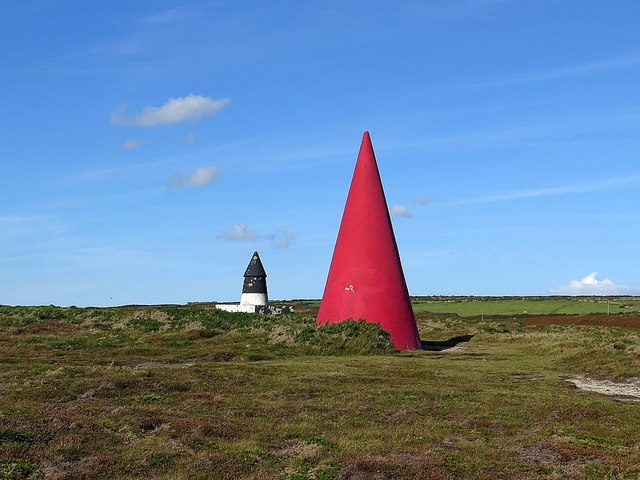Landmarks above Gwennap Head
Introduction
The photograph on this page of Landmarks above Gwennap Head by Andrew Curtis as part of the Geograph project.
The Geograph project started in 2005 with the aim of publishing, organising and preserving representative images for every square kilometre of Great Britain, Ireland and the Isle of Man.
There are currently over 7.5m images from over 14,400 individuals and you can help contribute to the project by visiting https://www.geograph.org.uk

Image: © Andrew Curtis Taken: 2 Oct 2016
The pair of cone-shaped navigation markers on Gwennap Head line up with the Runnelstone buoy Image They are day markers warning vessels of the hazard of the Runnel Stone. The cone to the seaward side is painted red and the inland one is black and white. When at sea the black and white one should always be kept in sight in order to avoid the submerged rocks nearer the shore. If the black and white cone is completely obscured by the red cone then the vessel would be directly on top of the Runnel Stone. The black and white landmark was erected by the Corporation of Trinity House in 1821 – an event recorded on a plaque on the back of the marker. Between 1880 and 1923 over thirty identified steamships were wrecked, stranded or sank in the area. There have been none since 1923. The navigation markers feature as "the Cones of Runnel" in Hammond Innes's 1940 thriller "The Trojan Horse". https://en.wikipedia.org/wiki/Gwennap_Head
Image Location







